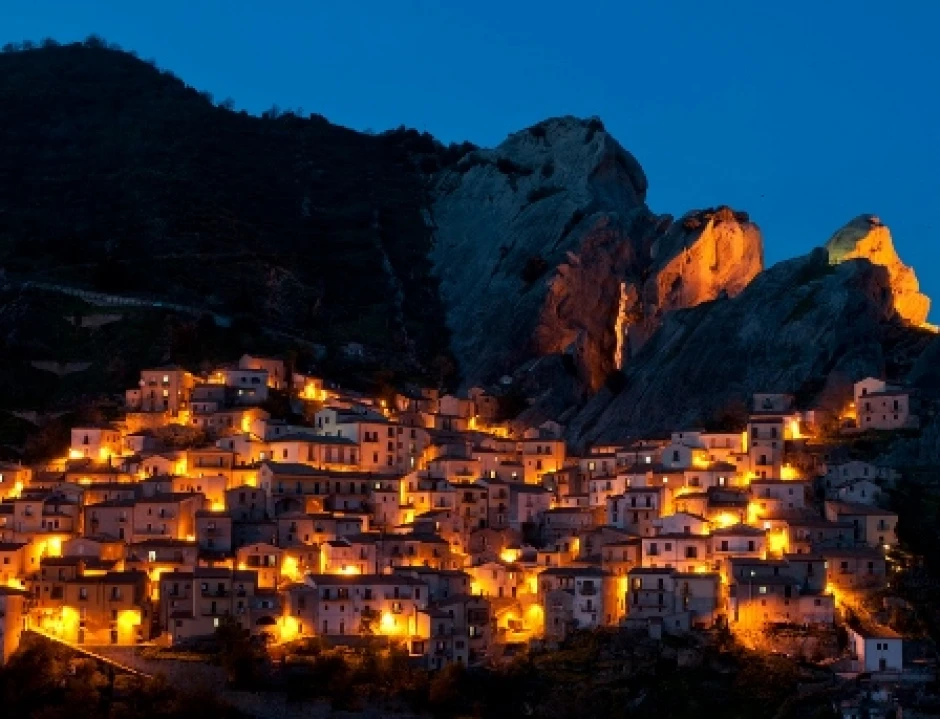WTI Magazine #80 2016 June 17
Author : I borghi più belli d'Italia Translation by:
Perched on a wall of peaks and pinnacles amid a fantastic rocky landscape, Castelmezzano has preserved its original medieval conformation. It is in fact a cluster of concentric houses set in a terraced rocky hollow, with roofs tiled with sheets of sandstone. Walking through the historic center one is struck by the unreal presence of rock incorporated in the buildings, the countless steep stairs that intertwine and invite you to climb to the peaks above and enjoy the fabulous scenery of the "Lucanian Dolomites," whose rugged, craggy appearance likens them to the mountains of the eastern Alps (although here they are of a different rock type, a compact sandstone).
A magnificent scene awaits those arriving at the village, which appears suddenly – as in a coup de théâtre – set like an amphitheater in the rocky wall, right after emerging from a tunnel dug through the rock, after passing through a spectacular gorge.
The rock is always there: porticos cut into it connect narrow streets and tiny squares, once a place for meeting and socializing. The Mother Church of Santa Maria, built on the main square in the 13th century using local stone, has a 14th-century wooden statue of the Madonna and Child of Olmo, a Baroque wooden altar and a Holy Family by Girolamo Bresciano.
Also worth seeing are the Chapel of Santa Maria, the rupestrian Church of the Madonna dell'Ascensione carved out from the rock, with an adjoining pre-Napoleonic cemetery, and the various palazzi of the village's various noble families: the Merlino, Parrella, Coiro, Paternò, and Campagna residences, and the vast Ducal Palace of the De Lerma family, the last lords of Castelmezzano.
Lastly, a visit to the ruins of the Norman-Suevian fortress is a must, with its steep, narrow stairs carved into the rock that lead to the highest point, where the lookout of the military garrison watched over the Basento valley below. To climb these fifty steps with hawks circling overhead is a near-mystical experience.
The name
Castrum Medianum, i.e. "castle in the middle," was the name of the Norman fortress located midway between the castles of Pietrapertosa and Brindisi Montagna.
The product
The sausage, a particularly flavorful salami that is prepared in various stages corresponding to different times of the year.



